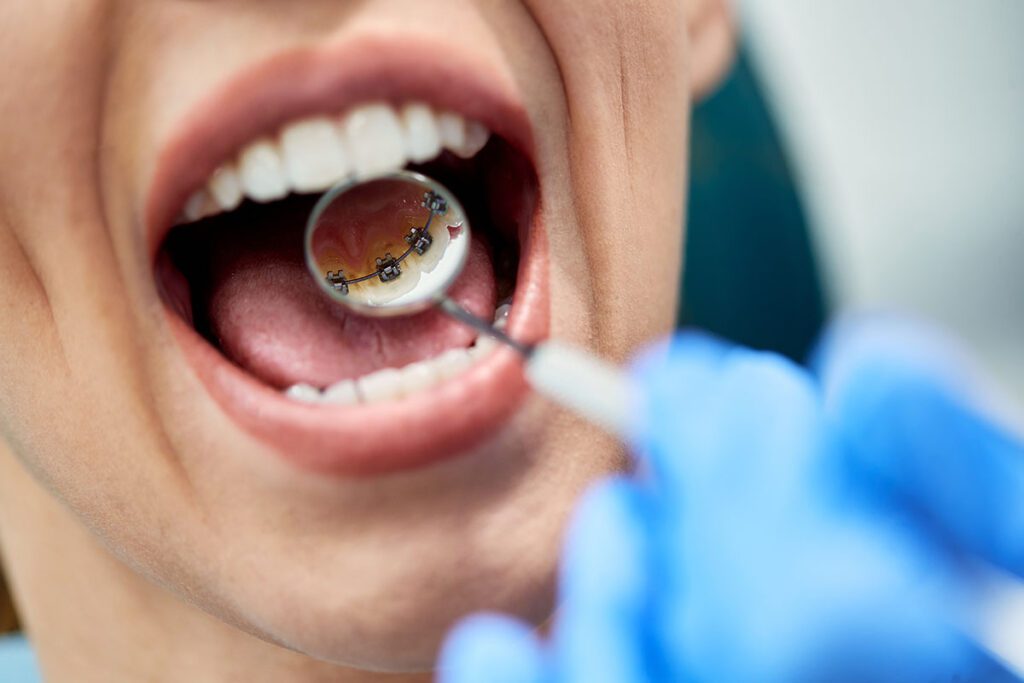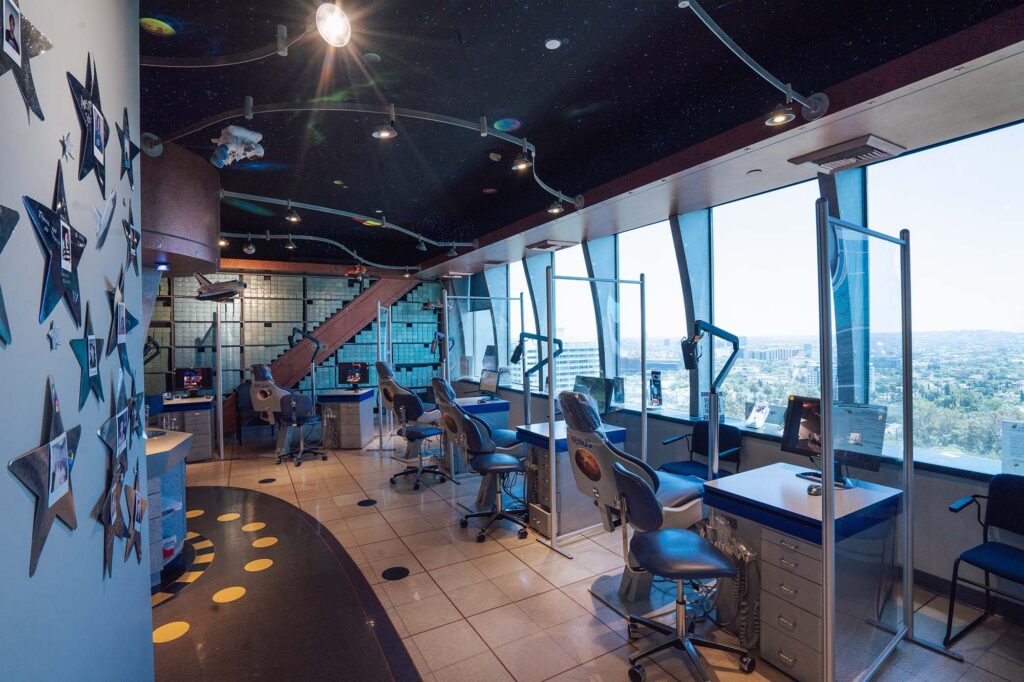
Lingual Braces for Los Angeles
What are lingual braces?
Traditional metal braces fit on the front of teeth. These are the metal braces you probably remember getting from a dentist in your teen years. But now there are many types of dental braces to improve oral health and provide orthodontic care to fit every lifestyle!
But lingual braces are different. They are braces that are attached behind the teeth. This makes them virtually impossible to see. Most of our patients refer to this technology as “invisible braces” or “incognito braces!”
At the Orthospaceship, Dr. F. Isaac Hakim and Dr. Chantal Hakim offer lingual braces for those who are seeking an invisible option when wearing braces. Because lingual braces are placed behind the tooth they are almost completely hidden, making the braces almost completely invisible. This allows you to fix your dental problems without others seeing your orthodontic treatment appliance.
Lingual Braces for Southern California
Where can I get lingual braces near me?
In the Los Angeles area, there are many dentistry providers. But for Southern California, one of the largest provider practices is the Orthospaceship- Hakim Orthodontics.
We are grateful for patients that travel from around the United States to get their beautiful smiles at our practice. Yet, our lingual braces are still affordable for most people. Our office is in Beverly Hills, serving not only Beverly Hills but also West Hollywood and the greater Los Angeles area.

Are lingual braces right for me?
Who qualifies for lingual braces?
Individual needs vary, but almost any adult who can get regular braces can also get lingual braces that are “invisible” once they are in your mouth.
Many of our patients who opt for lingual braces are those who work in the film, hospitality or client service industries because having invisible braces to straighten their teeth is an ideal choice. There are also others who just want invisible braces just to have beautiful smiles while wearing their hidden brackets.
One of the things we consider before the procedure to fit lingual braces is the length of the tooth. The teeth required for this technology need to be long enough to hold the braces. This means lingual braces are probably not the best option for your child. Children and adults with small teeth may not have adequate space for the lingual braces to grip the tooth. Dr Hakim will evaluate this for best results on a case-by-case basis. But remember, clear aligners may still be an option!
Wondering whether Invisalign or braces are right for you? Check out our direct comparison.
Lingual Braces Experts
Risks associated with lingual braces
Before our orthodontist can perform a patient treatment with lingual braces, they must first take you through any risks and complications that can arise from this technology.
Generally, these risks can be easily mitigated for adults. However, it is important to know of the risks involved in order to know how to act when you feel the effects. First of all, lingual braces can take longer to treat orthodontic issues as compared to regular braces. This can make them less effective in dental treatment. Talking with the lingual braces on may require some practice due to the position of the braces.
Almost anyone can learn how to speak with the braces on after about a week’s practice before becoming good at it. Swallowing can also pose a problem since the tongue thrust will be difficult to perform.
Our doctors will train you in some of these activities to help you enjoy the experience of lingual braces.


Clean and Protect Your Braces
Patient maintenance needed to wear lingual braces
Brushing as well as flossing daily is a must for lingual braces. We recommend regular dental hygiene since the position of the braces may limit proper cleaning and may create a problem.
You can use a fluoride mouthwash to preserve the teeth and provide fluoride protection while wearing your braces.
If a patient engages in any sports, it is always best to wear a mouth guard to protect your mouth when having any type of braces.

